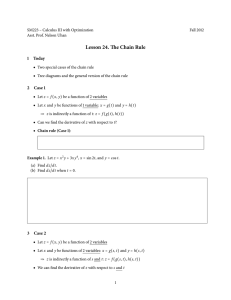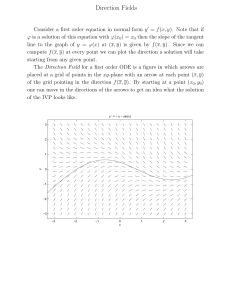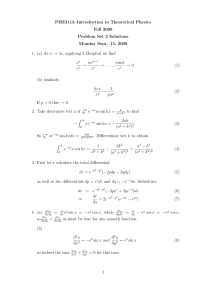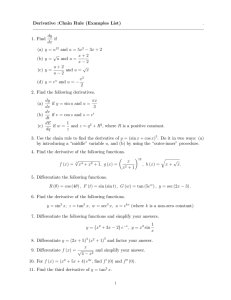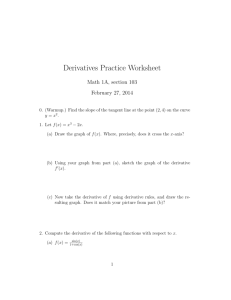Solution
advertisement
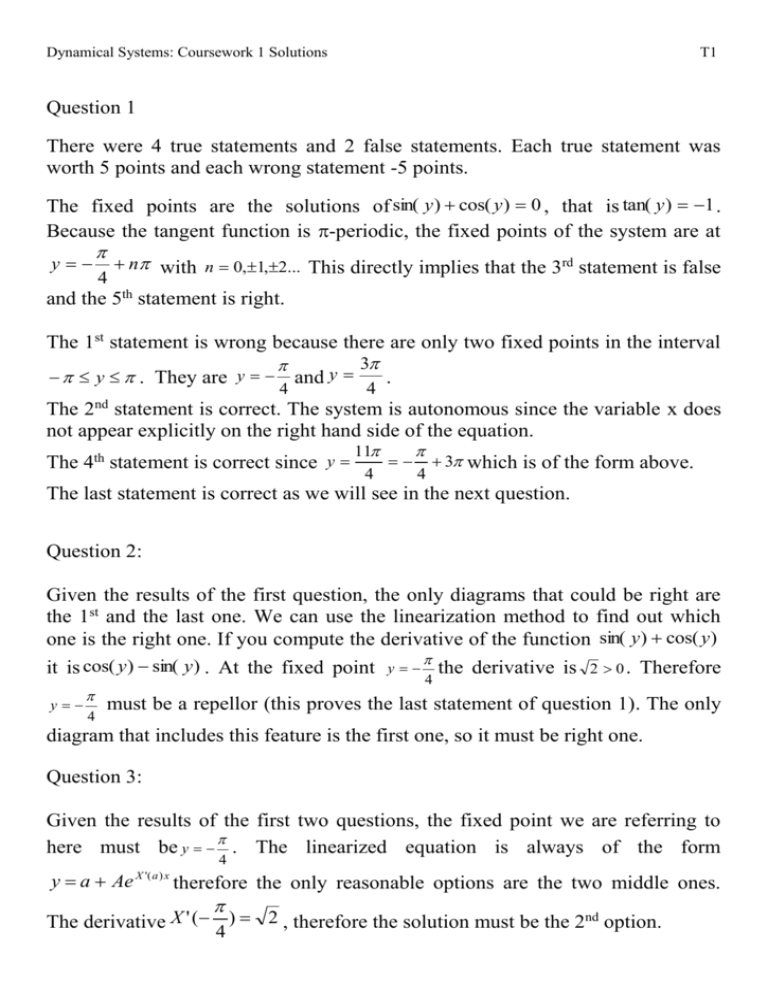
Dynamical Systems: Coursework 1 Solutions T1 Question 1 There were 4 true statements and 2 false statements. Each true statement was worth 5 points and each wrong statement -5 points. The fixed points are the solutions of sin( y ) cos( y ) 0 , that is tan( y ) 1 . Because the tangent function is -periodic, the fixed points of the system are at y n with n 0,1,2... This directly implies that the 3rd statement is false 4 and the 5th statement is right. The 1st statement is wrong because there are only two fixed points in the interval 3 y . They are y and y . 4 4 nd The 2 statement is correct. The system is autonomous since the variable x does not appear explicitly on the right hand side of the equation. The 4th statement is correct since y 11 3 which is of the form above. 4 4 The last statement is correct as we will see in the next question. Question 2: Given the results of the first question, the only diagrams that could be right are the 1st and the last one. We can use the linearization method to find out which one is the right one. If you compute the derivative of the function sin( y ) cos( y ) it is cos( y ) sin( y ) . At the fixed point y 4 y 4 the derivative is 2 0. Therefore must be a repellor (this proves the last statement of question 1). The only diagram that includes this feature is the first one, so it must be right one. Question 3: Given the results of the first two questions, the fixed point we are referring to here must be y . The linearized equation is always of the form 4 y a Ae X '( a ) x therefore the only reasonable options are the two middle ones. The derivative X ' ( ) 2 , therefore the solution must be the 2nd option. 4 Question 4: There are several ways of figuring out which of the diagrams is the right one. In fact, the easiest strategy is to identify the diagrams than can not be right. If we look at the equation dx dx y we see that for y 0 , 0 , which means that in dt dt the region where y is positive (the upper half plane), the arrows in the phase diagram must go in the direction of increasing values of x, that is towards the right. On the other hand, for y 0 , dx 0 , so in the lower half plane, the arrows dt must go in the direction of decreasing values of x, that is towards the left. The only diagram that has these features is the 1st one. Another way of looking at things would be to solve the equations. First of all, if dy sin( x) cos( x) we divide the equations by each other we get dx , which can be y solved by separation of variables. The general solution is y 2( cos( x) sin( x) C) where C is an arbitrary constant. The phase diagram will be a collection of curves which result from plotting all these solutions for different values of C. The fact that we always get pairs of solutions which only differ by a sign means that the phase diagram must be symmetric with respect to the x axis. This immediately tells us that the only possible solutions are the 1st and 3rd diagram. In order to decide which one is the right one we have to work out the directions of the arrows. If we look at the equation dx dx y we see that for y 0 , 0, dt dt which means that in the region where y is positive, the arrows in the phase diagram must go in the direction of increasing values of x. This means that they must go clockwise or towards the right. This selects out again the 1st diagram. Question 5: Here you could either solve the equation or substitute each of the given solutions into the equation and check which one works. Either way you should find that the right solution was the 1st one.
